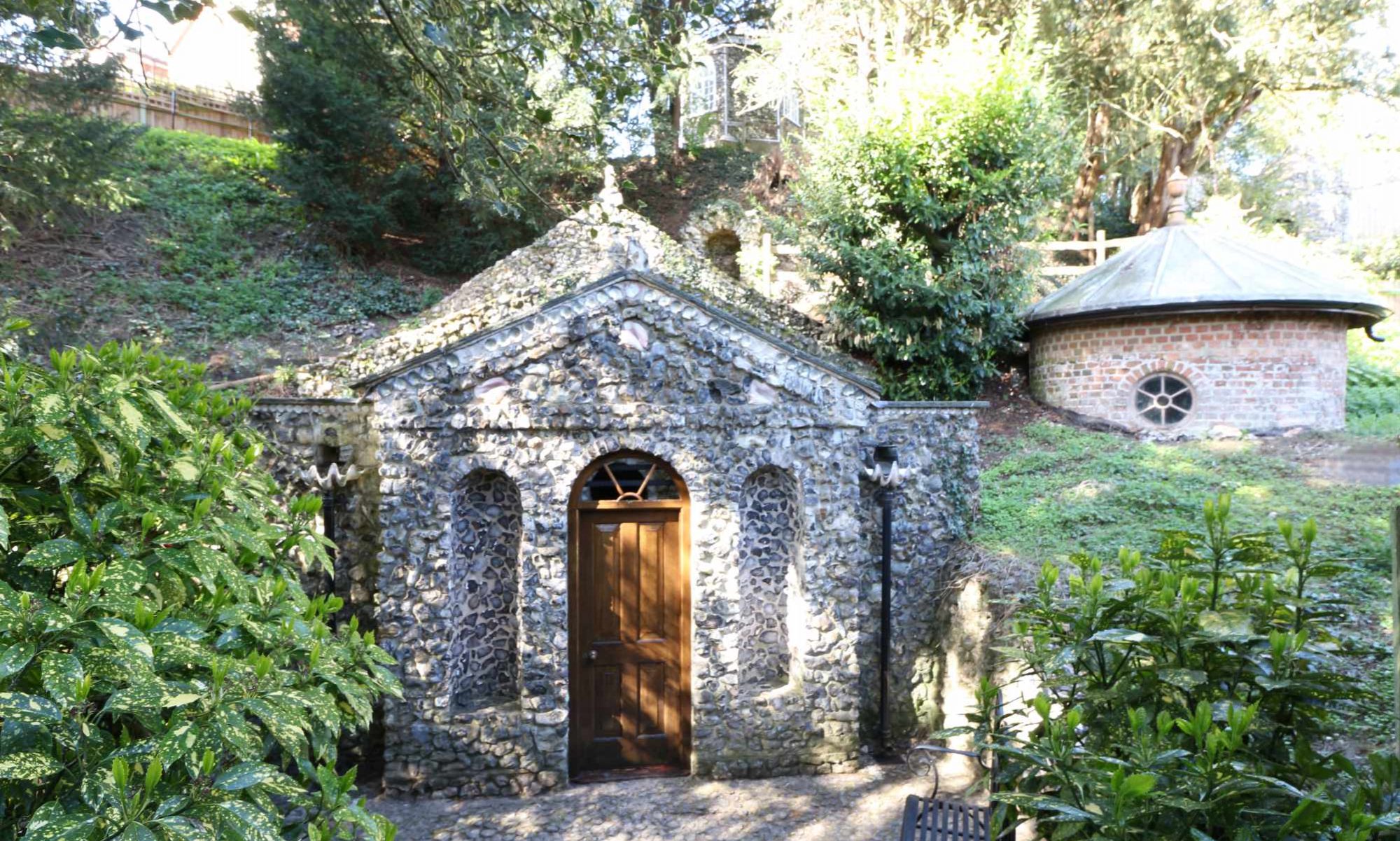Why is the Grotto here?
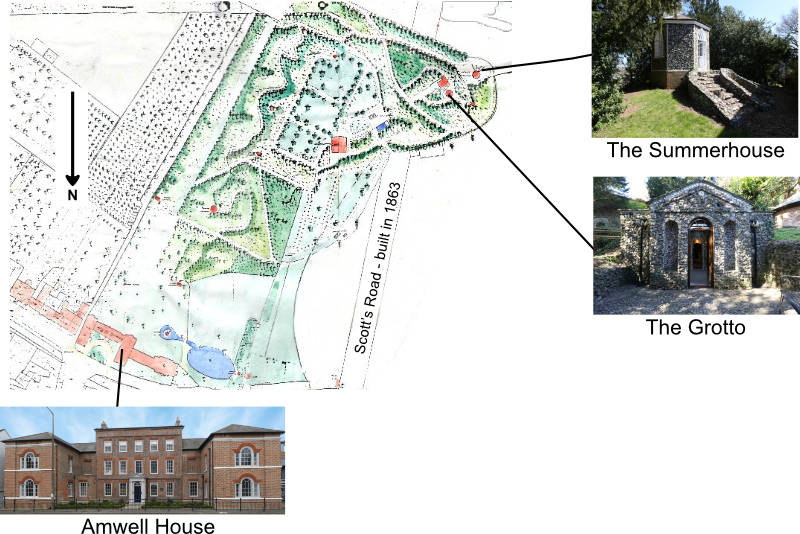
Scott’s Grotto stands in the only remaining part of John Scott’s original garden of Amwell House, where he lived during the latter half of the eighteenth century
The estate has been sold over the years in gradually smaller pieces for housing and educational use.
Over 200 years, Scott’s Grotto fell steadily into disrepair. But the worst damage occurred in the 1960’s when modern housing was built all round it and a developer sought to bulldoze it and erect Nos. 30-32 Scott’s Road on the site. The porch and dome of the Council Chamber were demolished, the summerhouse was damaged and the grotto was heavily vandalised.
In 1974, the newly formed East Herts Council took responsibility for it and carried out basic repairs. In 1986, the Ware Society (which is the conservation body for the town and had been opening the grotto to the public) proposed a comprehensive restoration scheme.
Work began in January 1990 and since the reopening in 1991 Scott’s Grotto has been managed jointly by East Herts Council and the Ware Society. In 2019 it was transferred to the Scott’s Grotto CIO (a charity) to preserve it for future generations.
John Scott
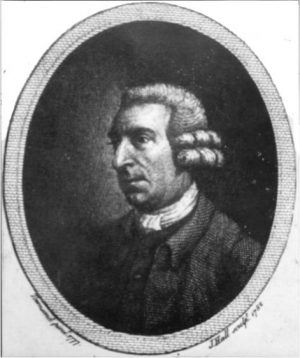
John Scott (1730-1783) was a Quaker landowner, whose father had moved from London to escape the smallpox and had made a fortune in the Ware malting industry.
In the 1760’s, John Scott landscaped the hillside as a formal ‘rococo’ garden with many summerhouses, rustic seats and ‘piles of stones’. Its culmination was the grotto, cut into the chalk hillside, probably in imitation of Alexander Pope’s grotto at Twickenham.
Like Pope, Scott was a poet and in the octagonal summerhouse above the grotto he wrote his best known poem ‘Amwell’, which was originally to have been known as ‘A Prospect of Ware and the Country Adjacent’.
Scott started building his Grotto with the porch and the chamber immediately behind it all of which he finished in 1764 calling it his Shell Temple.
The remainder of the grotto was finished by 1773 when his friend, Dr. Johnson, came to see it and pronounced it ‘A Fairy Hall’. Many other people came to see Scott’s Grotto and wrote their names in his visitors’ book.
The Grotto
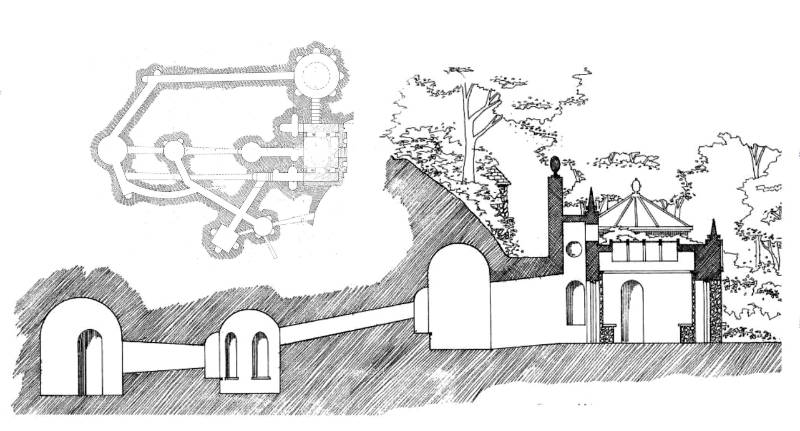
The Grotto itself is made of a series of passages and chambers, some lined with shells, some rendered with lime mortar. Air tunnels ensure that the Grotto is well ventilated which helps to preserve this 250 year old structure.
We don’t know the exact reason why John Scott built the Grotto. It may have been as a garden feature and a way of attracting his friends from London – a day’s journey in the late 1700’s – but also, as a Quaker, in order to give his workers employment during the winter months.
The Summerhouse
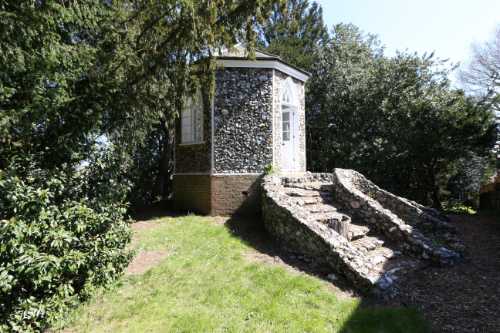
At the highest part of the garden, at the top of a flight of stone steps sits the Summerhouse. In John Scott’s day this would have given splendid views across the river valley to St Mary’s church. Scott described this as ‘the airy octagon’ and undoubtedly used it when writing much of his poetry.
By the time of the restoration in 1990 the summerhouse had fallen into a sorry state of repair. The internal structural timbers had decayed to such a degree that winter gales threatened collapse of the whole building. Extensive work was carried out to carefully remove the external flint cladding panels, replace the internal supporting structure and, paying careful attention to detail, restore the building to its original condition as seen today.
